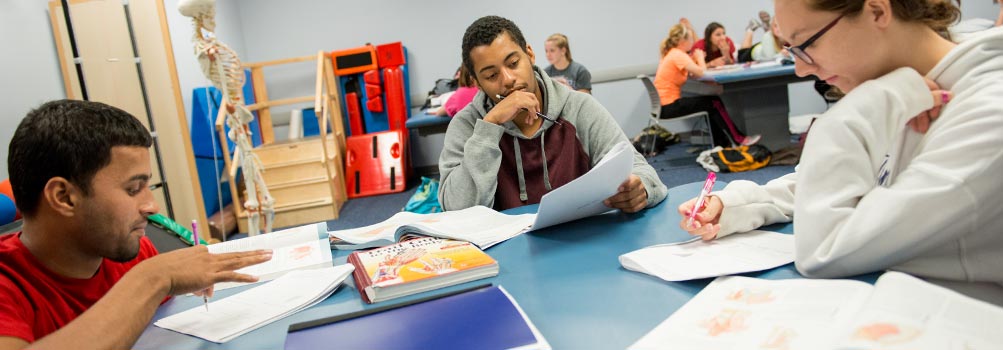Students attending the program receive an associate of science degree upon successful completion of the program. Major course work includes:
- Introduction to Physical Therapy
- Anatomy
- Physiology
- Kinesiology
- Therapeutic Exercise I & II
- Pathophysiology
- Advanced First Aid
- Procedures I & II
- Rehabilitation
- Human Musculature & Functional Anatomy
- Professional Issues in Clinical Practice
- Clinical Reasoning
Specific description for the courses listed above can be found in the Undergraduate Bulletin.
Additional general education courses are also required for a total of 71 credits.
Students are expected to learn and perform physical activities utilizing proper body mechanics and techniques to prepare them for the rigors of physical therapy treatment. Such activities include, but are not limited to, patient lifting, transfers, ambulation training and guarding, manual exercises, sterile techniques for wound treatment, and training in mat and floor mobility skills. Training includes the safe and appropriate use of electromedical equipment and physical agents for the treatment of multiple ailments. Students are expected to communicate effectively utilizing professional terminology in verbal and written forms.
Practical clinical experiences are an integral part of the program. Three full-time off-campus experiences are included in the curriculum. The first experience occurs in the fall semester of the second year, and the last two experiences occur in the summer at the conclusion of the didactic portion of the program. These affiliations will be scheduled by the Academic Coordinator of Clinical Education (ACCE) in coordination with the various clinical sites. The program has affiliation agreements with a large number and variety of clinical sites throughout the Commonwealth and other states. Students will practice under the supervision of a physical therapist and perhaps also under the direction of a physical therapist assistant.




